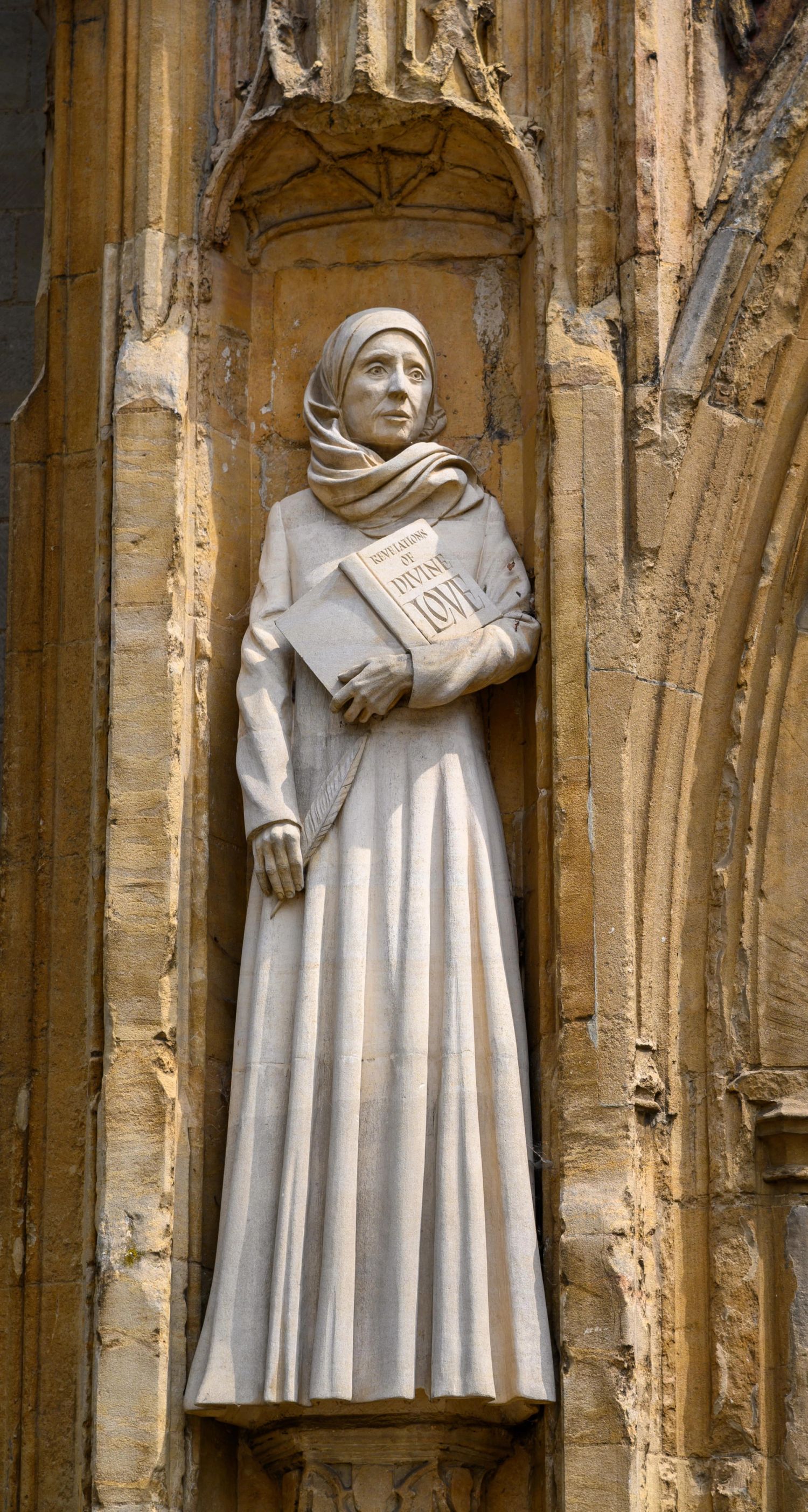Julian of Norwich

One of Norwich's most famous daughters
Julian of Norwich (c.1342 – after 1416) was a woman who chose to become an anchoress, being permanently walled up in a cell attached to St Julian’s Church in the city.
Ironically, because of the book she wrote there, her Revelation of Divine Love (the first surviving book written in English by a woman), she has become one of Norwich’s best-known and well-loved citizens. Admirers and pilgrims from all over the world come to Norwich to visit the cell where she lived.
Little is known of her life other than that she received her revelation in 1373 (after which she set down the first version of her text), that she completed a longer version around 1393 and that she entered her cell by 1394. She encourages her readers to seek Jesus Christ in prayer, in the Scriptures, and in the Sacraments, as means of experiencing his reconciliation and forgiveness.

